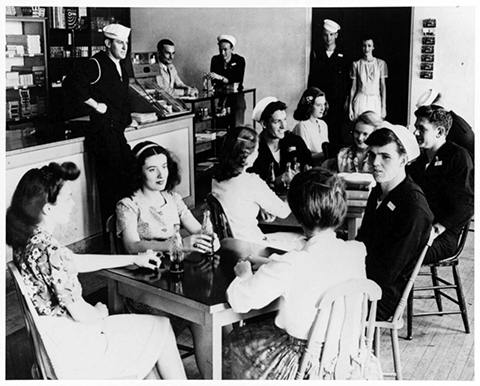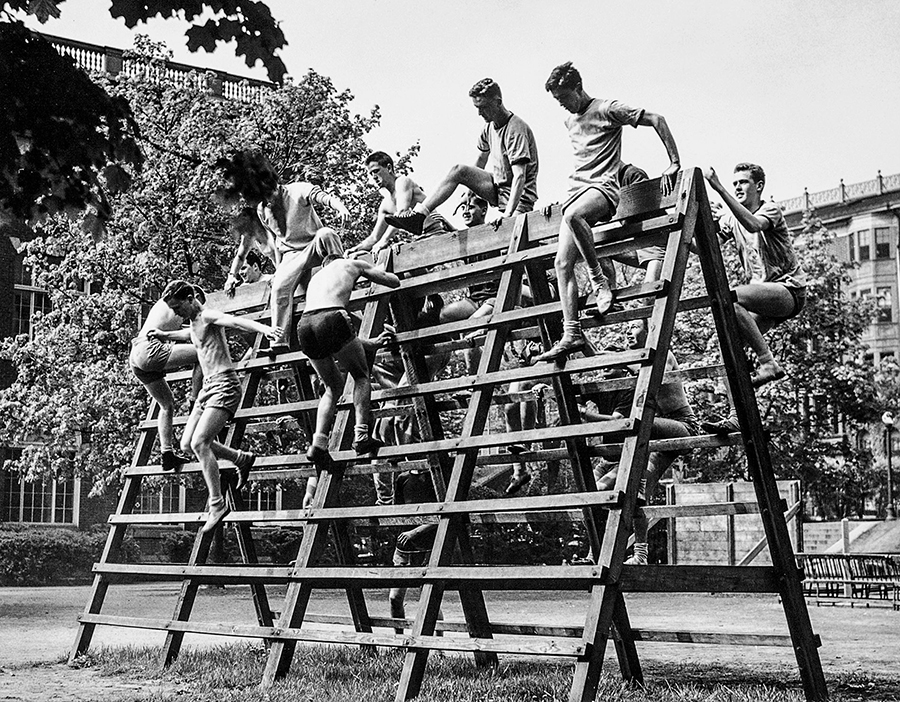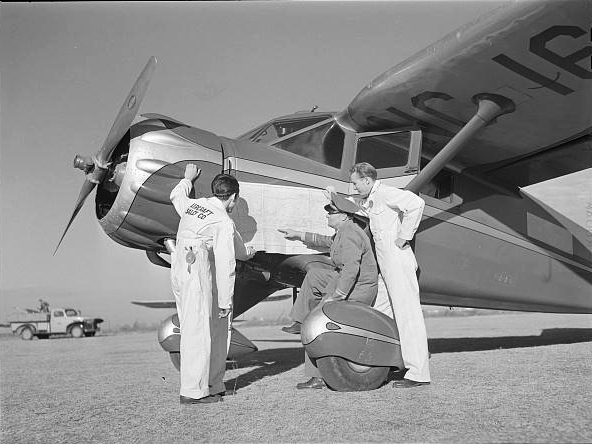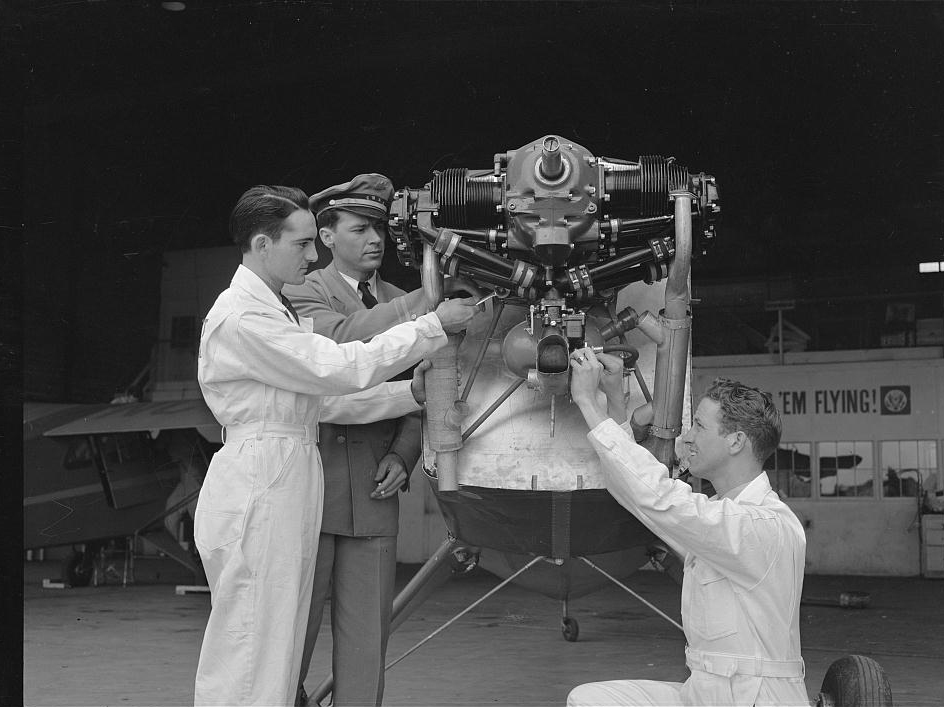
Looking Back
by James Rada
Colleges Take to the Skies
When World War II started in 1939, the United States had roughly 38,000 trained pilots. It wasn’t enough to fight a war. Men were willing to join the Air Corps, but there weren’t enough instructors to train them all.
Often, the men waiting to become pilots were members of the Army Enlisted Reserve.
“This Enlisted Reserve consisted of young men who had been picked by the Air Corps after a suitable examination but who had been permitted to stay temporarily in civilian life pending vacancies in the various Air Corps training centers,” the Gettysburg College Alumni News reported.
As the number of pilots increased, it became clear that the best ones were those who had studied subjects pertinent to flying while in college, such as mathematics, physics, and advanced geography. However, fewer and fewer of the Air Corps openings were being filled by college students.
At the same time, many small colleges felt financial strain as their students joined the military and left college. Some colleges even considered closing because of lagging enrollment, according to the Alumni News.
Then, someone realized colleges could be helped and the quality of the pilot candidates improved at the same time. The Enlisted Reserve men would undergo intensive training to prepare them to become pilots at colleges around the country that had classroom space. The Alumni News estimated that the program would pack twice as much education into the same time as a regular college program.
“Thus, then, these institutions could stay open and retain their financial solvency, and the Army Air Forces could get their men trained along exactly the lines that were desired. One other factor which has been somewhat overlooked in regards to the training program, is that that thousands of young men who would normally not go to college had the opportunity of getting a rather good college education and in the collegiate surroundings which mean almost more than the book-work itself,” the Alumni News reported.
Mount St. Mary’s College and Gettysburg College were among the colleges and universities chosen where pilots would be trained, although under different programs.
Gettysburg College took part in Civilian Pilot Training School, which began in Gettysburg in the fall of 1942. Young men received classroom training at Gettysburg College and flying and mechanical instruction at the new Gettysburg Airport on Mummasburg Road.
“It is now possible for an American boy to start from scratch on a flying career and become an Army pilot instructor in 32 weeks,” Richard Bircher told a meeting of the Gettysburg Lions Club in 1942. He was given charge of both the Civilian Pilot Training program and the airport.
The Mount was part of the V-12 Navy College Training Program, which offered students a path to a Navy commission. The program was created to increase the number of Navy officers being commissioned, in addition to those who graduated from the United States Naval Academy and the U.S. Naval Reserve Midshipmen’s School.
Once enrollees completed their V-12-subsidized bachelor’s degree programs, their next step toward obtaining a commission depended whether they were in the Navy or the Marines.
During WWII, more than 125,000 participants were enrolled in the V-12 Navy College Training Program across the United States, of which, 400 young men attended the Mount.
Newspapers announced on June 30, 1942, that the first group of 25 sailors from the Navy would be arriving soon. “Of the 25, ten will begin primary training, ten will start secondary training and five will begin studies of instruments,” the Hagerstown Mail reported.
Besides classroom training, the sailors were also given flight instruction at an airfield, established about a quarter mile from campus. Outside of the classroom work, the Waynesboro airport provided six flight instructors and five teachers for ground school, along with 10 planes. Seven were for primary training and three for secondary work. Coach Wally Opekun was in charge of making sure they were kept in peak physical condition during their time in Emmitsburg.
Gettysburg College was one of the few colleges in the country that offered all four Civilian Pilot Training Courses: Elementary, Secondary, Cross-Country, and Instructor. The college also had the largest quota of students assigned to any one school operator, according to The Gettysburg Times.
During its short service, the CPT program trained 84 men, each of whom had received 35 hours of flying instruction and 240 of ground school training. Besides providing practical experience, the Alumni News reported that the flying time, “also serves the double purpose of giving the classification center and us an insight into whether or not the student is basically unfit to become a pilot, and whether or not the student has a fear of heights, or is subject to airsickness.”
Besides learning to fly, the students took classes in meteorology, navigation, air-engine operations, flight theory, aircraft, aircraft identification, military science and courtesy, military and physical training, code, military force, and organization.
This push for pilots succeeded. By the end of 1942, roughly 200,000 men in the United States were pilots.
According to the Mount website, “In honor of its service to the armed forces training programs, the school received a 3-inch/50-caliber anti-aircraft gun from the USS Detroit—a ship credited with one downed and one assisted downed aircraft during the battle at Pearl Harbor. Two years later Memorial Gymnasium was built and dedicated to the alumni killed in World Wars I and II.”

Sailors in the V-12 Navy Training Program at Washburn University relax with other students in the student union.

Sailors in the V-12 Navy Training Program at Brown University participate in a PE program.

Instructor and students studying map at civilian pilot training school. Meacham Field, Fort Worth, Texas.

Students working on an airplane motor at civilian pilot training school. Meacham Field, Fort Worth, Texas.
